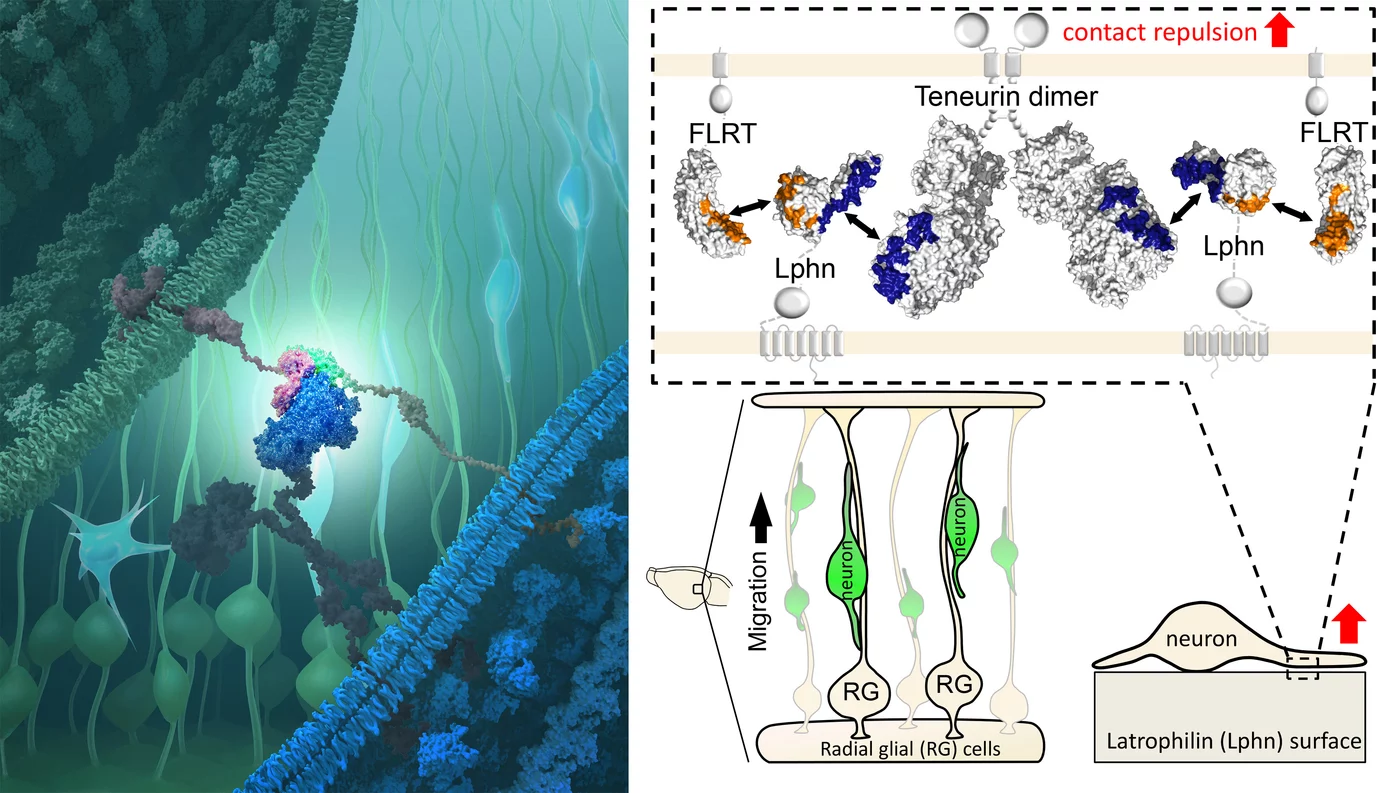Shaping the social networks of neurons

Identification of a protein complex that attracts or repels nerve cells during development
The three proteins Teneurin, Latrophilin and FLRT hold together and bring neighboring neurons into close contact, enabling the formation of synapses and the exchange of information between the cells. In the early phase of brain development, however, the interaction of the same proteins leads to the repulsion of migrating nerve cells, as researchers from the Max Planck Institute of Neurobiology and the University of Oxford have now shown. The detailed insight into the molecular guidance mechanisms of brain cells was possible due to the structural analyses of the protein complex.
Well anchored, the proteins Teneurin and FLRT are located on the surface of nerve cells. They are on the lookout for their partner protein, Latrophilin, on other neurons. When the three proteins come into contact, they interconnect and hold the membranes together. They then trigger still largely unknown signaling cascades and thus promote the formation of a synapse at this site. Teneurin and its partner proteins are known to establish these important cell contacts in the brain. Teneurin is also an evolutionary very old protein, with related proteins found in diverse organisms ranging from bacteria to worms, fruit flies and vertebrates. However, the role of these proteins during brain development, when neurons are not yet forming synapses, remained unknown.
